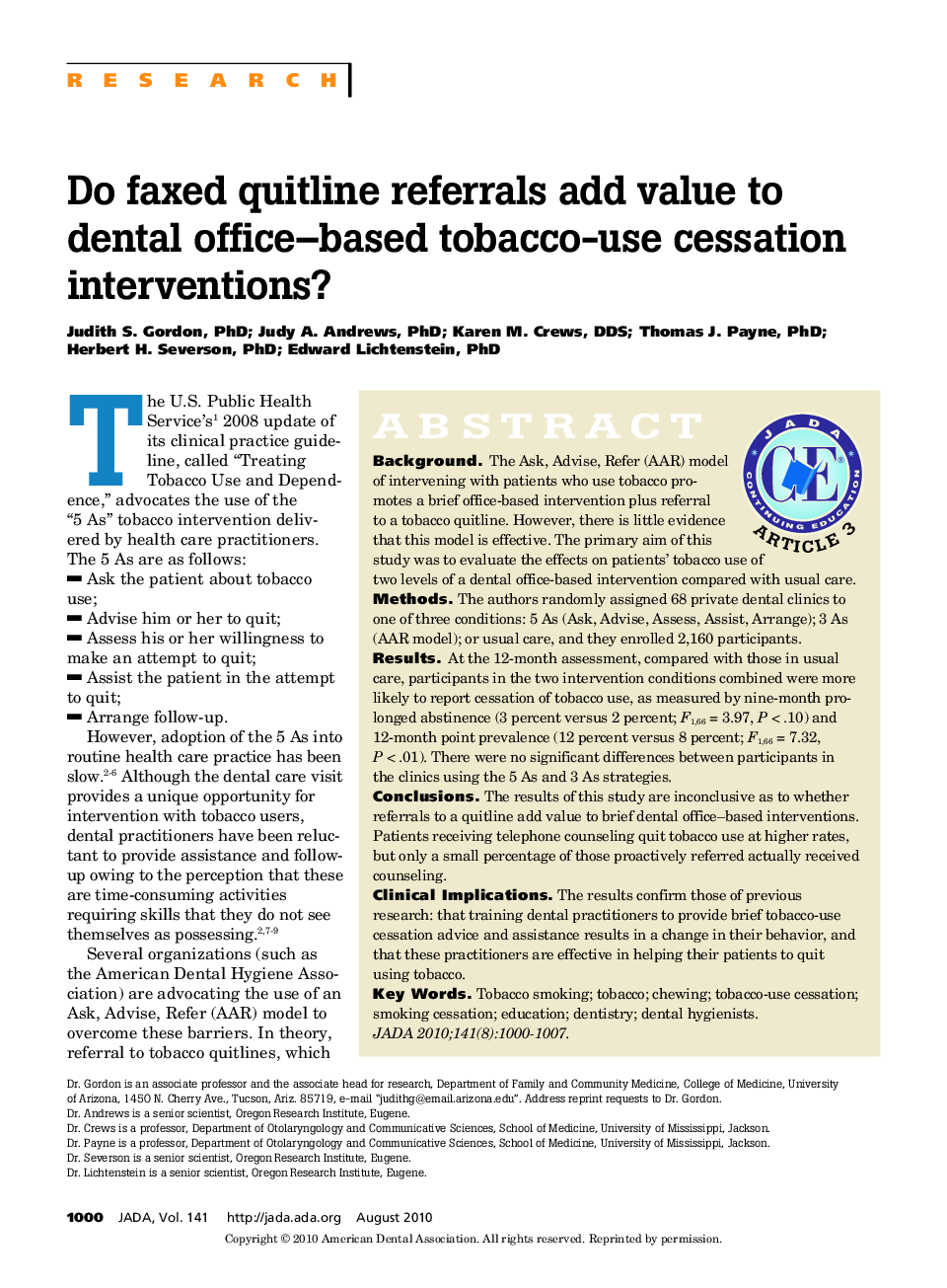| Article ID | Journal | Published Year | Pages | File Type |
|---|---|---|---|---|
| 3138433 | The Journal of the American Dental Association | 2010 | 8 Pages |
ABSTRACT BackgroundThe Ask, Advise, Refer (AAR) model of intervening with patients who use tobacco promotes a brief office-based intervention plus referral to a tobacco quitline. However, there is little evidence that this model is effective. The primary aim of this study was to evaluate the effects on patients' tobacco use of two levels of a dental office-based intervention compared with usual care.MethodsThe authors randomly assigned 68 private dental clinics to one of three conditions: 5 As (Ask, Advise, Assess, Assist, Arrange); 3 As (AAR model); or usual care, and they enrolled 2,160 participants.ResultsAt the 12-month assessment, compared with those in usual care, participants in the two intervention conditions combined were more likely to report cessation of tobacco use, as measured by nine-month prolonged abstinence (3 percent versus 2 percent; F1,66 = 3.97, P < .10) and 12-month point prevalence (12 percent versus 8 percent; F1,66 = 7.32, P < .01). There were no significant differences between participants in the clinics using the 5 As and 3 As strategies.ConclusionsThe results of this study are inconclusive as to whether referrals to a quitline add value to brief dental office–based interventions. Patients receiving telephone counseling quit tobacco use at higher rates, but only a small percentage of those proactively referred actually received counseling.Clinical ImplicationsThe results confirm those of previous research: that training dental practitioners to provide brief tobacco-use cessation advice and assistance results in a change in their behavior, and that these practitioners are effective in helping their patients to quit using tobacco.
